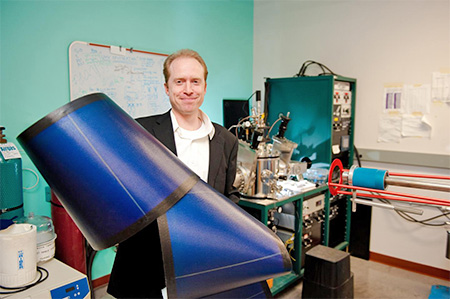As more coal-fired power plants are retired, industry workers are left without many options. There is a light at the end of the tunnel, though.
|
ADVERTISEMENT |
In a new study published in Energy Economics, researchers from Michigan Technological University and Oregon State University offer hope for coal workers for high-quality employment in the rapidly expanding solar photovoltaic industry.
Joshua Pearce, who holds a dual appointment in materials science and engineering as well as electrical and computer engineering at Michigan Tech, helped assess what it would take to retrain workers for a different energy field.

Image 1: Joshua Pearce’s lab at Michigan Tech focuses on the accessibility of solar and 3D printing technologies.
“Although coal investors can simply call their brokers to move their money to more profitable industries, coal workers are left with pink slips and mortgages,” Pearce says. “Fortunately, the solar energy industry sector is growing at an incredible rate—and they are hiring.”
…
Add new comment